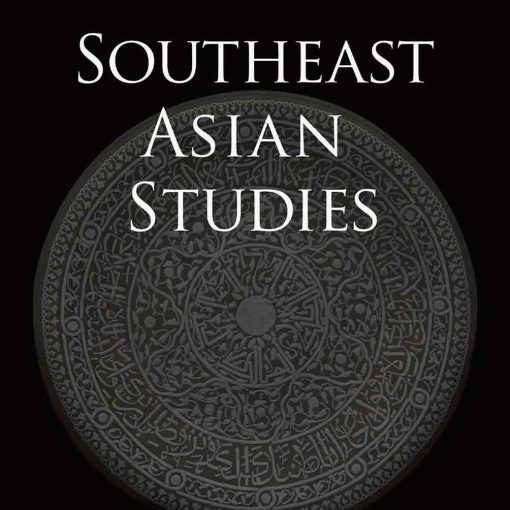Contents>> Vol. 9, No. 2
The Defeat of Barisan Nasional: Missed Signs or Late Surge?
Francis E. Hutchinson and Lee Hwok Aun, eds.
Singapore: ISEAS Publishing, 2019.
This book unpacks Malaysia’s 14th general election (GE-14) of May 2018. Facing the long-ruling Barisan Nasional (BN) administration, the freshly configured opposition bloc, Pakatan Harapan (PH), emerged triumphant, seemingly against all odds. It has been two years since that eventful day, but what do we make of the election? Bringing together ISEAS–Yusof Ishak Institute researchers and a group of selected collaborators, this book presents 23 chapters covering four angles: campaign dynamics, important trends among key interest groups, local-level development in key states, and personal perspectives from a selection of GE-14 participants.
The core message of the book is the post-event unpacking of the chink in the armor of the mighty BN and how it manifested itself during GE-14. For instance, Chapter 2 (by Kai Ostwald) details how the electoral system was in favor of the incumbent, shedding light on electoral manipulations, mass media partiality, money politics, and ethnic slants. By extension, defeating the BN required a coalition that featured many of the former’s key attributes, especially the Bumiputra-centric orientation. The importance of this requirement was reflected in the first Cabinet composition of PH. As astutely observed by Ostwald, parties that could attract Bumiputra, rural, and East Malaysian voters received over half of the Cabinet positions (14 of 27) despite securing only about one-quarter (32 of 121) of PH’s total seats. Ostwald dampens the expectation that post-GE-14 reforms will be smooth sailing or linear, as many imprints of the old administration—more because of political expediency than moral considerations—will likely survive into the coming years of Malaysian politics.
Chapter 9 (by Geoffrey Pakiam) focuses on the voting patterns of Federal Land Development Authority (FELDA) settlers. This study is important because of the settlers’ disproportionately weighty presence in the electoral system: FELDA wards take up a much higher share of parliamentary seats than their voter numbers indicate, have a median of roughly 20,000 fewer registered voters when compared with Peninsular Malaysia’s non-FELDA constituencies, and usually have higher proportions of ethnic Malay voters than non-FELDA wards in Peninsular Malaysia (see Figs. 9.2 and 9.3, pp. 212–213). Taking a long-term perspective, Pakiam shows that the FELDA vote bank, originally a BN fortress, was broken by both PH and Parti Islam Se-Malaysia (PAS) in the most recent GE. However, this decline was probably at least a decade in the making. Pakiam demonstrates, using longitudinal voting data, that close to 80 percent of all FELDA parliamentary seats had gravitated away from BN since 2004. Like Ostwald, Pakiam sounds the sober note that if PAS and BN choose to not contest against each other in the same FELDA wards in future elections, PH might struggle in these areas.
The standout feature of this book is its attention to local-level dynamics in key states throughout the country. Praise goes to the editors for curating essays on five critical states—three in Peninsular Malaysia (Selangor, Johor, and Kelantan) and two in East Malaysia (Sarawak and Sabah). Studies on Malaysian politics too often harp on events at the national level, without equivalent attention paid to events on the ground. Thus, it is heartening to see this attention to local politics. My personal favorite essay is Chapter 15 (by Lee Poh Onn), which analyzes developments in the hornbill state of Sarawak. It goes into considerable depth on historical issues such as the maneuvering of chief ministers that came before the long-ruling Taib Mahmud (1981–2014), weaving them into current developments such as GE-14. There is also participant observation covering the three key constituencies of Bandar Kuching, Petra Jaya, and Mas Gading. Each of them was selected based on its ethnic composition, degree of urbanization, candidates, and parties. The choice of Bandar Kuching is lauded for it is the state’s capital and oftentimes a bellwether for the rest of Sarawak, especially the urban areas. For similar reasons, Petra Jaya was chosen because it is urban but houses a predominantly Muslim Bumiputra population. Meanwhile, Mas Gading was selected because it is a semi-rural seat with a largely non-Muslim Bumiputra populace.
Overall, this book is well organized as it balances the intellectual demands of a multi-themed approach, analyzing how the proverbial David took on Goliath and won. It also does so with a fairly reasonable speed to market, which in itself is noteworthy. Befitting its ambitious title, the book is a valuable vault of information for both general and specialist readers interested in Malaysian and Southeast Asian politics. Notwithstanding its thickness, the book provides up-to-date empirical findings to policy makers, researchers, and business executives.
Guanie Lim 林鏆湙
Nanyang Centre for Public Administration, Nanyang Technological University
DOI: doi.org/10.20495/seas.9.2_284




